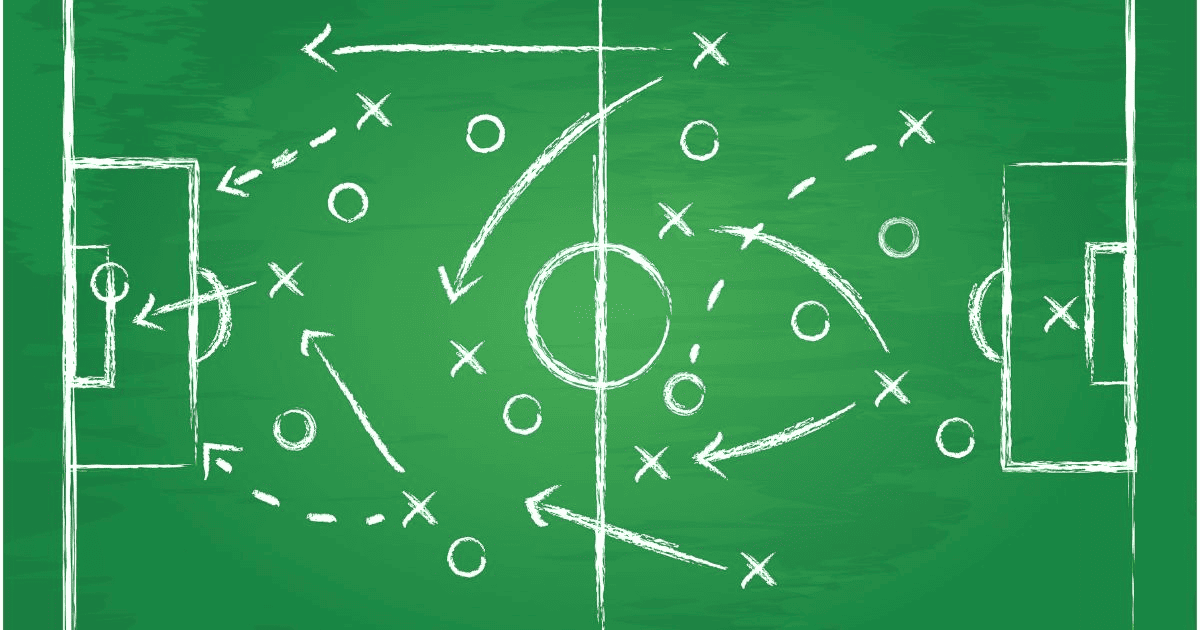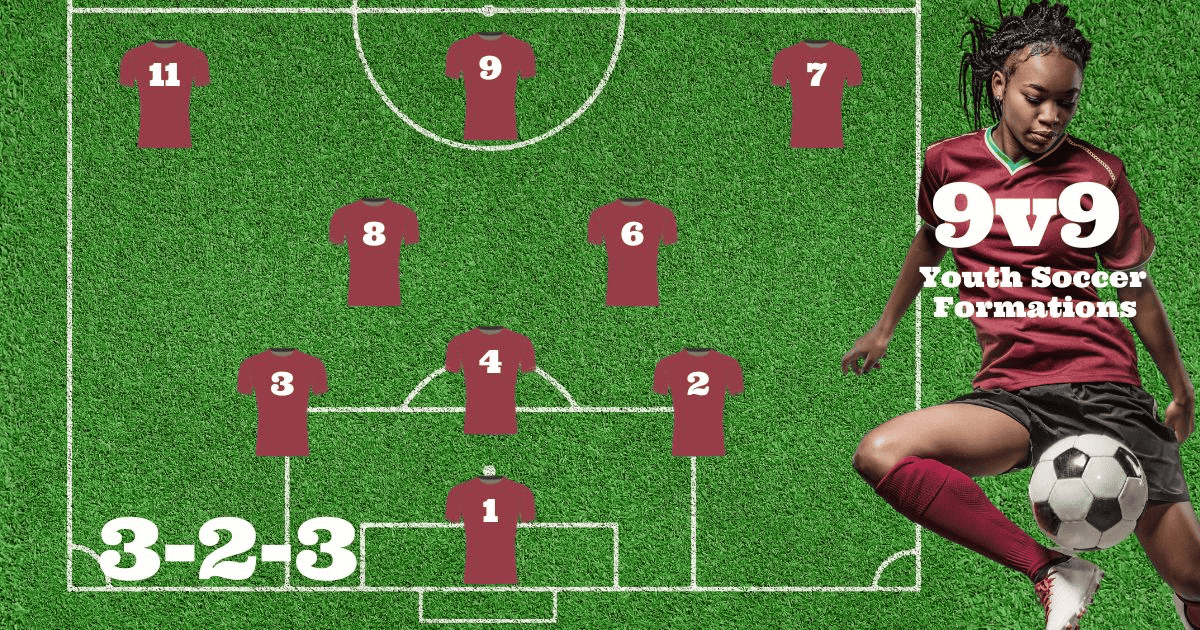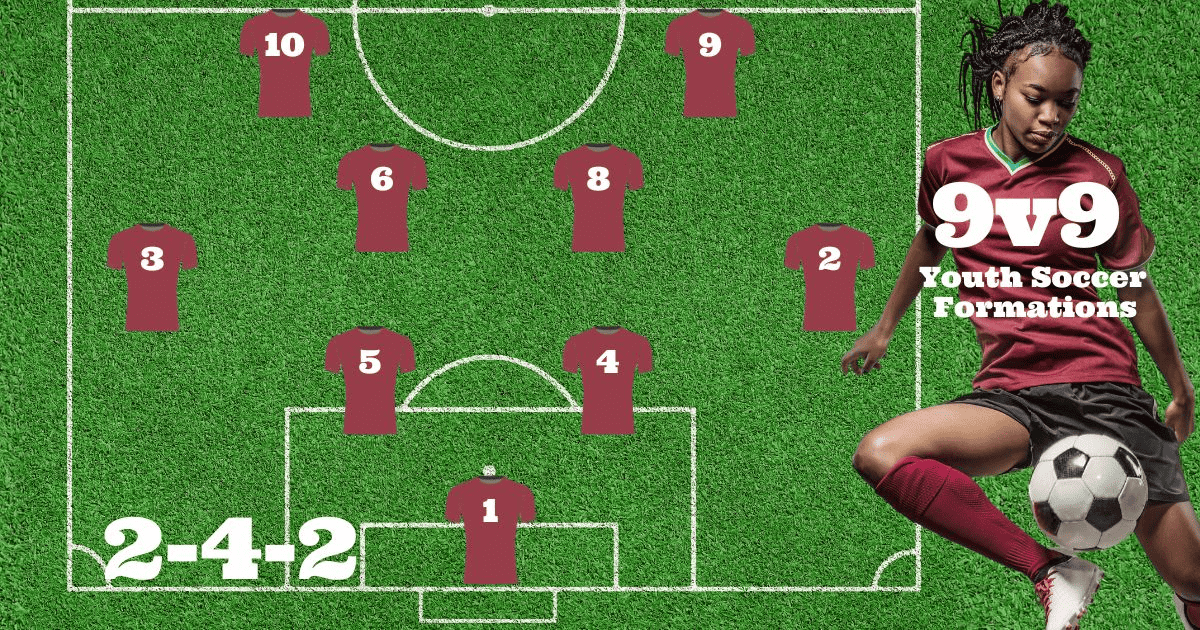Hey there, soccer enthusiasts and coaches! If you’ve ever wondered why 9v9 soccer doesn’t get the limelight it deserves, you’re not alone. This article aims to shed light on the importance of 9v9 soccer formations and provide you with a comprehensive guide to mastering them. So, let’s dive into the nitty-gritty of the best 9v9 formations, shall we?
Bạn đang xem: A Comprehensive Guide to Mastering 9v9 Soccer Formations
The Classic 3-2-3: A Balanced Approach
If you’ve ever watched a youth soccer game, chances are you’ve seen the Classic 3-2-3 formation in action. This balanced formation consists of three defenders supported by two central midfielders. The versatility of this formation makes it a popular choice for teams.
The Classic 3-2-3 offers a harmonious blend of defensive solidity and attacking prowess. The three defenders provide a reliable backline, while the two midfielders act as the engine room, responsible for defensive duties and initiating attacks. The trio of forwards is positioned to exploit spaces and create scoring opportunities, making the 3-2-3 a well-rounded choice.
Tactically, the 3-2-3 is a flexible formation that can adapt to various game situations. The two midfielders play a crucial role in linking the defense and the attack, ensuring the team functions as a cohesive unit. The wide players in the attacking trio can stretch the opposition’s defense, opening up spaces for the central forward and advancing midfielders. It requires players to be tactically aware and versatile in their roles.
On the attacking front, the 3-2-3 formation is designed to create overloads and exploit weaknesses in the opposition’s defense. The three forwards, supported by the midfield duo, offer various options for intricate play and quick combinations. Defensively, the formation can quickly morph into a 3-5-1 or even a 5-3-1, providing ample cover at the back.
Overall, the Classic 3-2-3 is a balanced formation that offers teams a stable platform for both defensive security and attacking creativity, making it a popular choice for coaches who value adaptability.
The Versatile 2-3-2-1 / 2-3-3: A Formation for All Seasons
Ah, the 2-3-2-1 / 2-3-3 formation — truly a formation for all seasons. This setup offers youth players the opportunity to experience different positions on the field. It is a versatile formation that allows for tactical flexibility, making it one of the best choices for teams looking to adapt quickly to the opposition’s strategies.
The 2-3-2-1 / 2-3-3 formation provides the perfect platform for player development. It allows players to grasp the nuances of positional play, particularly in central midfield. The midfielders have the crucial role of finding passing lanes and keeping possession. This neutral formation enables the midfield to pivot effortlessly between launching a counter-attack and falling back to support the defense.
In terms of attacking opportunities, this formation doesn’t disappoint. With advanced positions for two strikers or even a trio of forwards, the opposition defense is constantly kept on their toes. The flexibility to switch between positions allows for a dynamic playstyle. This formation not only helps break down the opposition but also facilitates individual growth.
The Essentials
- Players Needed: Industrious midfielders, wingers or attacking midfielders, and a strong center forward.
- Adaptable to 11v11: 3-4-2-1 (3-4-3), 4-3-2-1 (4-3-3)
Pros and Cons
- Pros: Suits various playstyles, offers symmetry, and is easily adjustable.
- Cons: Requires fast defenders and constant communication.
Expert Tip
This formation is like a chameleon; it adapts to your team’s strengths. Perfect for coaches who love tactical flexibility.
The Possession-Oriented 3-1-3-1: Pep’s Brainchild
The Possession-Oriented 3-1-3-1 formation is a standout among 9v9 soccer formations, often attributed to the tactical genius of Pep Guardiola. This formation aims to dominate possession of the ball and includes four midfielders with one defensive midfielder anchoring the team. It requires a high level of understanding between the defensive and midfield lines.
Xem thêm : The Tallest Premier League Players in History: A Closer Look
From a player development viewpoint, the 3-1-3-1 formation is a goldmine. It allows players to grasp the nuances of positional play, particularly in central midfield. The midfielders drop back or push forward as the team plays, offering a dynamic approach to both defensive duties and attacking threats. Wide midfielders have the responsibility of covering wide defensive zones, often challenging opposition wingers. This encourages players to be versatile, understanding both offensive and defensive aspects of the game.
In terms of breaking down the opposition defense, the 3-1-3-1 shines as an attacking formation. The attacking midfielder, positioned just behind the striker, has the freedom to create and exploit spaces, making it one of the best formations for offensive teams. The defenders and defensive midfielder provide ample defensive coverage, allowing the attacking players to focus on dismantling the midfield lines of the opposition.
The Essentials – The Defensive Midfielder
- Players Needed: Ball-playing defenders, wingers, and a defensive midfielder who’s a jack-of-all-trades.
- Adaptable to 11v11: 4-1-4-1, 4-2-3-1
Pros and Cons
- Pros: Ideal for possession-based play, offers great width.
- Cons: Vulnerable if not good in possession, defensive midfielder can get overworked.
Expert Tip
If you’re a fan of Pep Guardiola’s style, this formation is your best bet. It’s all about controlling the game.
The Simple Yet Effective 3-3-2: Back to Basics
The Simple Yet Effective 3-3-2 formation is like a breath of fresh air for teams looking to get back to basics. This formation is particularly beneficial for young players as it offers a straightforward approach to both attacking and defending. It allows teams to control possession effectively and encourages team play while focusing on player development.
The 3-3-2 provides a balanced structure that helps players understand their roles clearly. Wide midfielders get to explore the flanks, offering width and creating space for attacking players. This formation is also forgiving for weaker players, allowing them to integrate into the team without being exposed too much.
When it comes to breaking down the opposition defense, the 3-3-2 can be surprisingly effective. The two forwards apply constant pressure, forcing errors and creating scoring opportunities. This straightforward approach often catches more complex formations off guard. It’s a tried-and-true formation that offers a balanced and effective way to approach the game.
The Essentials
- Players Needed: Wide midfielders, unselfish strikers, and good passers.
- Adaptable to 11v11: 4-4-2, 3-5-2
Pros and Cons
- Pros: Simplistic, effective for possession, and allows for an attacking duo.
- Cons: Lack of clearly defined roles, easily outnumbered in central areas.
Expert Tip
Sometimes, simplicity is key. The 3-3-2 is straightforward but effective, especially if you’re new to coaching 9v9.
The Possession-Heavy 2-4-2: Midfield Dominance
The Possession-Heavy 2-4-2 formation is a masterclass in midfield dominance. With a four-player midfield, this setup is designed to control the center of the park and dictate the tempo of the game. The two central midfielders are key in winning the ball back and launching attacks. They’re supported by wide midfielders who can tuck in to congest the middle or flare out to stretch the opposition. This formation is all about keeping the ball and is ideal for teams that aim to dominate possession.
Tactically, the 2-4-2 offers a balanced approach. The four defenders provide a solid foundation at the back, allowing the midfielders and forwards more freedom to express themselves. This formation is particularly effective against teams that rely on counter-attacks. The wide midfielders also have a role to play defensively, offering additional layers of security.
In terms of attacking, the 2-4-2 is no slouch. The two forwards are positioned to exploit gaps in the opposition’s defense, and they’re well-supported by the midfield quartet. Quick and intricate passing sequences are key, with the aim to pull defenders out of position and create scoring opportunities. The 2-4-2 formation is about using the ball effectively to break down the opposition and create high-quality chances.
The Essentials
- Players Needed: Fast defenders, tactically aware midfielders, and unselfish strikers.
- Adaptable to 11v11: 4-4-2, 3-5-2, 3-4-3
Pros and Cons
- Pros: Overloads the midfield, versatile, and works well for counter-attacks.
- Cons: Requires fast defenders and constant communication.
Expert Tip
If you’re looking to dominate the midfield, the 2-4-2 is your formation. It’s like having a Swiss watch in the middle of the park—precise and intricate.
The Defensive 4-3-1: A Solid Foundation
The Defensive 4-3-1 formation is a fortress of a setup, designed to give teams a rock-solid foundation at the back. With a four-player defensive line, this formation minimizes risks and shuts down the opposition’s attacking threats. The three midfielders in front of the defense act as a buffer, disrupting plays and winning back possession. The lone striker up top may seem isolated, but their primary role is to hold up the ball and wait for support from the midfield. It’s a highly effective formation for teams looking to play it safe and secure.
Xem thêm : Oldest Football Stadiums
Tactically, the 4-3-1 offers a dream scenario for coaches who prioritize defensive stability. The four defenders maintain a disciplined line, closing gaps and making it difficult for the opposition to find a way through. The midfield trio covers ground, supports the defense, and transitions the ball into attack when the opportunity arises. It’s a formation that demands fitness and tactical awareness from players but rewards them with an organized defensive unit.
When it comes to transitioning into attack, the 4-3-1 offers more than meets the eye. A quick transition can turn this formation into a potent counter-attacking setup. The lone striker, supported by surging runs from the midfield, can quickly turn defense into attack. Quick ball movement and making the most of attacking opportunities are key.
The Essentials – Defensive and Midfield Lines
- Players Needed: Four strong defenders, fast outside defenders, and a quick striker.
- Adaptable to 11v11: 4-2-3-1, 4-3-3, 5-3-2
Pros and Cons
- Pros: Effective for wing play, teaches the 4-defensive system early.
- Cons: Can become overly defensive, limits the striker’s playstyle.
Expert Tip
If defense wins championships, then the 4-3-1 is your golden ticket. It’s a great introduction to the world of 11v11 soccer.
Final Thoughts: Tailoring Formations to Your Team
Remember, folks, the formation should fit the team, not the other way around. Always play to your players’ strengths and keep experimenting until you find that sweet spot.
So, there you have it—a comprehensive guide to mastering 9v9 soccer formations. Now go out there and win some games!
Coach’s Corner – Frequently Asked Questions
How do I choose the best 9v9 soccer formation for my youth soccer team?
Prioritize Individual Development
First and foremost, your formation should allow for individual growth. Each player should have the opportunity to hone specific skills and achieve their learning goals.
Align with Team Philosophy
Consider your team’s overall vision. Your formation should be the blueprint that brings this vision to life. Think about the kind of players you want to develop and how you’d like your team to play in an 11v11 setting. Reverse-engineer that into your 9v9 formation.
Prep for the Big Leagues
9v9 is not just a scaled-down game; it’s a stepping stone to 11-a-side soccer. Use your formation to mimic specific roles or units that players will encounter in 11v11. It helps them build valuable on-field relationships early on.
Flexibility in Roles
Even if a player’s 9v9 position doesn’t exactly mirror their future 11v11 role, use it as a learning opportunity. They can still practice valuable skills like possession and attacking when outnumbered.
Keep it Simple, Coach!
Youth soccer is about development, not outsmarting the other coach. Your formation should be a tool for player growth, not just a strategy to win games.
Variety is the Spice of Soccer
Don’t be afraid to shake things up within the same formation. Encourage players to approach positions differently based on the challenges they face in a game. This offers a buffet of learning experiences throughout the season.
Don’t Overcomplicate
Remember, kids are still learning. What’s clear to you might be a foggy concept for them. Introduce new tactical changes gradually and resist the urge to switch things up too often.
And there you have it! A game plan for choosing a 9v9 soccer formation that’s not just about the scoreboard but about building a team for the future. Now, go make some magic on that field!
This article offers some great tips on choosing the right 9v9 soccer formation. Movin993
Nguồn: https://movin993.com
Danh mục: Tin tức






